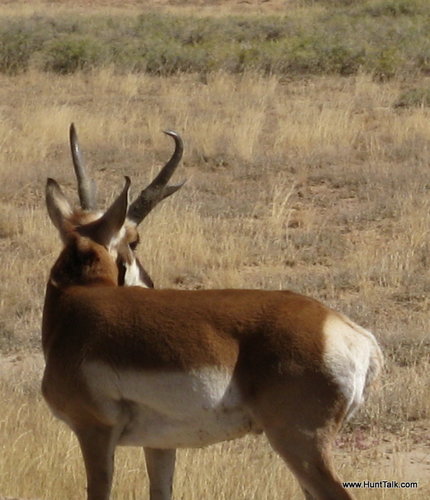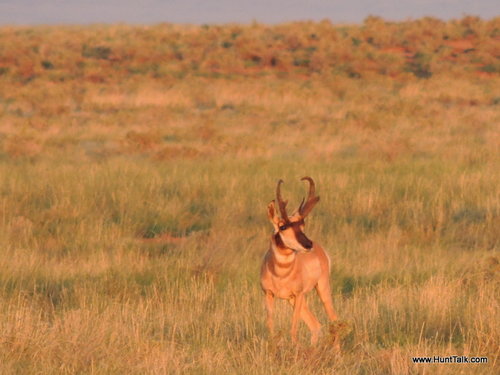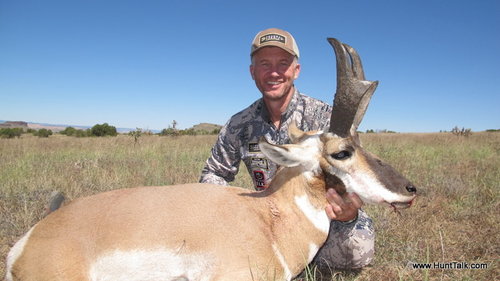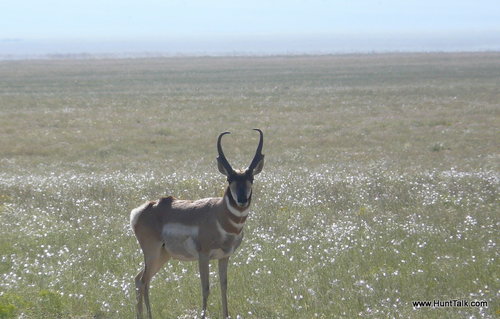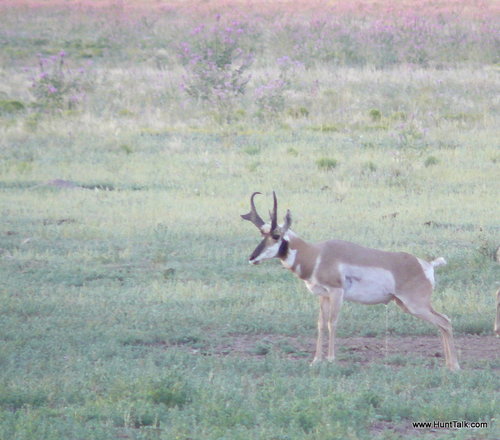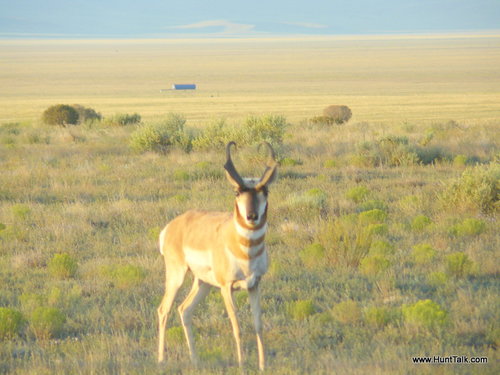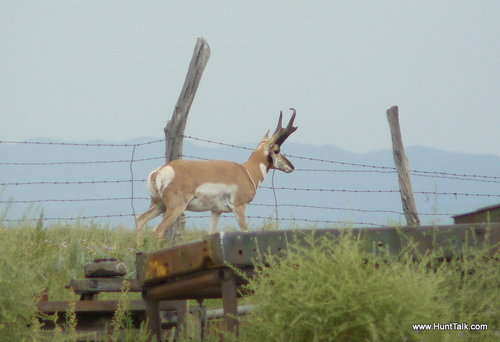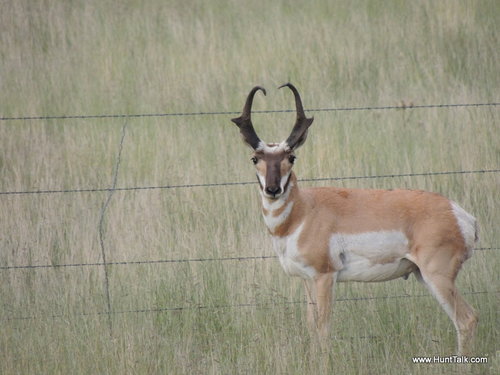Spent some time going through my tons of pronghorn pics today, trying to see what some of the live bucks looked like and then what they looked like once they were on the deck. I must be bored. More likely, I am in research mode and I was scouring the draw odds and harvest data for WY and NV pronghorn today. Need to find a NV unit that will give a tag to a NR with only two points.
Easy to see how easy it is to misjudge pronghorn, depending upon the angle. Probably more so than any other animal. A whopper elk looks like a huge elk, no matter the angle. Whether from the side or the front, a big deer looks big. From behind, looks even bigger.
Then there are pronghorns. Depending upon the way their horns angle, either straight ahead and bladed looking or flared to the sides, the side view can be very deceiving. Length can be easily disguised by really good mass. A deep hook in or back adds a lot more length than one expects. And, the difference in a big buck is not a huge amount of inches from a really nice buck.
The buck I shot in Wyoming this year really illustrates this fact. When I look at the side angle, I can see why the hunters in the truck ahead of me decided to pass on the buck. They did get some other views, so maybe the side view threw them off and they thought they were overestimating when they were presented the other view.
These are pics at about 400 yards with my 42X Nikon, so I apologize for how grainy they are.
I doubt anyone would shoot this buck from this side view.
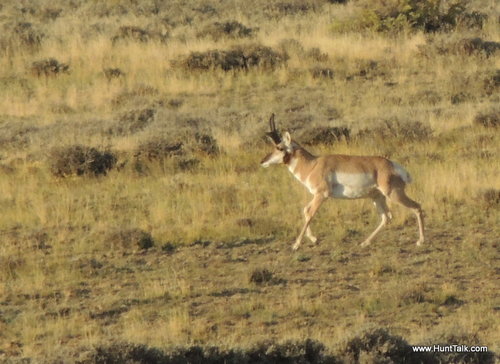
Then, when you see him straight on, he looks a lot more appealing.
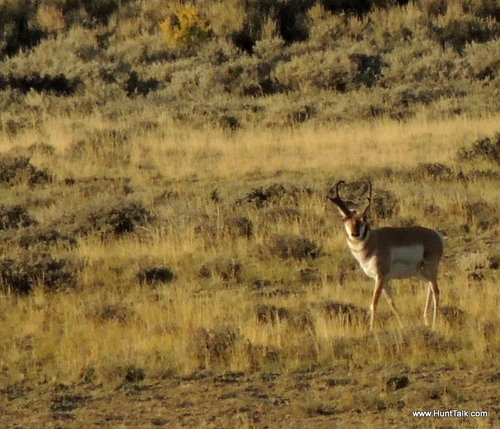
Until he looks at a quartering too angle, you really can't get a good feel for his prongs or make a judgement as to his total mass, as shown here.
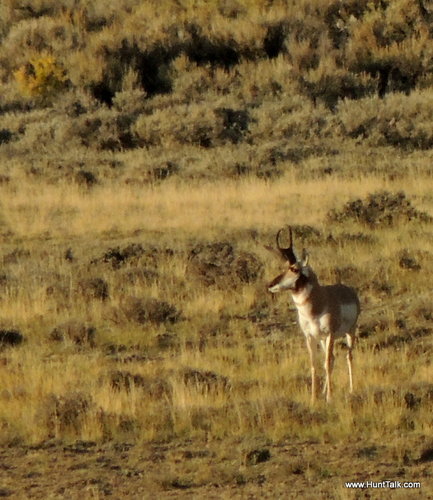
He is one of those bucks with horns canted to a 45 degree angle from straight on, making him look thin from the sides and also hides his prong length. He also has a big hayhook that curls in, making his length from the side look like maybe 13", rather than the 16/16.5" that he is.
Looking at these pics, it makes me wonder how many really good bucks I might have walked away from. Probably a lot more than I would like to admit.
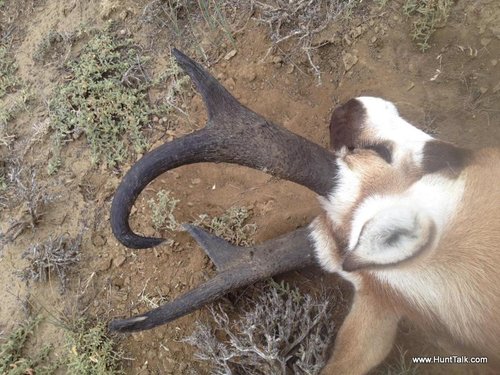
In the Season One Fresh Track episode of Wyoming antelope, I looked at a buck that Mark ended up shooting. The first day, I saw him really close, like around 250 yards. I looked him over and took a ton of pics. Not until I pulled them up on the computer that night did I realize how bad I misjudged the buck. Using the "eyeball" technique from Grimmett's "Size Matters" DVD, I suspected I underestimated the mass. And if I missed on the mass, I concluded I probably missed on the length.
That night at dinner, all I could talk about was how I screwed that up and the buck probably got smoked by someone else that day. I apologized to Mark. Thankfully, we went looking for him and found him at daylight the next morning. Mark made a great shot and had an 80.5" buck to show for it. Whew, that could have been embarrassing.
I'm going to dig out some others of bucks I know there score and for which we have "on the hoof" pics. Nothing better to do with a winter evening.
Easy to see how easy it is to misjudge pronghorn, depending upon the angle. Probably more so than any other animal. A whopper elk looks like a huge elk, no matter the angle. Whether from the side or the front, a big deer looks big. From behind, looks even bigger.
Then there are pronghorns. Depending upon the way their horns angle, either straight ahead and bladed looking or flared to the sides, the side view can be very deceiving. Length can be easily disguised by really good mass. A deep hook in or back adds a lot more length than one expects. And, the difference in a big buck is not a huge amount of inches from a really nice buck.
The buck I shot in Wyoming this year really illustrates this fact. When I look at the side angle, I can see why the hunters in the truck ahead of me decided to pass on the buck. They did get some other views, so maybe the side view threw them off and they thought they were overestimating when they were presented the other view.
These are pics at about 400 yards with my 42X Nikon, so I apologize for how grainy they are.
I doubt anyone would shoot this buck from this side view.

Then, when you see him straight on, he looks a lot more appealing.

Until he looks at a quartering too angle, you really can't get a good feel for his prongs or make a judgement as to his total mass, as shown here.

He is one of those bucks with horns canted to a 45 degree angle from straight on, making him look thin from the sides and also hides his prong length. He also has a big hayhook that curls in, making his length from the side look like maybe 13", rather than the 16/16.5" that he is.
Looking at these pics, it makes me wonder how many really good bucks I might have walked away from. Probably a lot more than I would like to admit.

In the Season One Fresh Track episode of Wyoming antelope, I looked at a buck that Mark ended up shooting. The first day, I saw him really close, like around 250 yards. I looked him over and took a ton of pics. Not until I pulled them up on the computer that night did I realize how bad I misjudged the buck. Using the "eyeball" technique from Grimmett's "Size Matters" DVD, I suspected I underestimated the mass. And if I missed on the mass, I concluded I probably missed on the length.
That night at dinner, all I could talk about was how I screwed that up and the buck probably got smoked by someone else that day. I apologized to Mark. Thankfully, we went looking for him and found him at daylight the next morning. Mark made a great shot and had an 80.5" buck to show for it. Whew, that could have been embarrassing.
I'm going to dig out some others of bucks I know there score and for which we have "on the hoof" pics. Nothing better to do with a winter evening.




